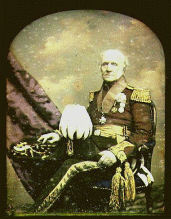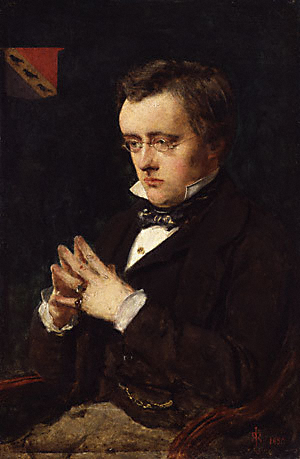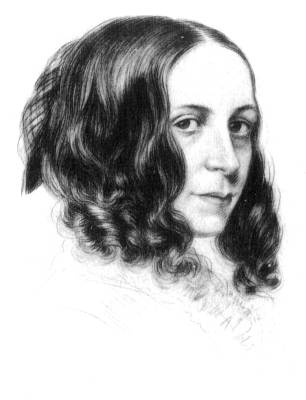|
Upper Wimpole Street
Wimpole Street is a street in Marylebone, central London. Located in the City of Westminster, it is associated with private medical practice and medical associations. No. 1 Wimpole Street is an example of Edwardian baroque architecture, completed in 1912 by architect John Belcher as the home of the Royal Society of Medicine. 64 Wimpole Street is the headquarters of the British Dental Association. Wimpole Street was home to a few celebrities, such as Paul McCartney who lived at the home of the Asher family at 57 Wimpole Street in 1964–1966 during his relationship with Jane Asher. At this address John Lennon and Paul McCartney wrote "I Want to Hold Your Hand" in the front basement room, while McCartney wrote the tune to " Yesterday" in a box room at the top of the house. On the corner of Wimpole and Wigmore Street took place a legal case about causing a "nuisance" between neighbours, in ''Sturges v Bridgman'' (1879). In 1932, Paul Abbatt and Marjorie Abbatt opened a toy sh ... [...More Info...] [...Related Items...] OR: [Wikipedia] [Google] [Baidu] |
Paul & Marjorie Abbatt
Marjorie Abbatt, née Norah Marjorie Cobb (18 March 1899 – 10 November 1991) was an English toy-maker and businesswoman. Early life and marriage She was born in Surbiton, the daughter of Edward Rhodes Cobb (1872–1965), a fur broker, and his wife Marion Murray née Thomson (1875–1971), and was educated at Roedean School. After studies at Somerville College, Oxford, where she graduated B.A. in 1923, she married (Cyril) Paul Abbatt in December 1930, giving up postgraduate work at University College, London. Paul, born 1899 in Bolton, was from a Quaker family, and a graduate of Trinity Hall, Cambridge, and then taught at Sidcot School. He was influenced by Woodcraft Chivalry, and this interest led to the couple meeting in 1926 at a gathering at Godshill, Hampshire. He had been a conscientious objector of World War I. His father George William Abbatt was a merchant in cane, and was involved in Bolton in the manufacture of basketry skips. Influences Intending to set up a progres ... [...More Info...] [...Related Items...] OR: [Wikipedia] [Google] [Baidu] |
Tilly Losch
Ottilie Ethel Leopoldine Herbert, Countess of Carnarvon (''née'' Losch; November 15, 1903 – December 24, 1975), known professionally as Tilly Losch, was an Austrian dancer, choreographer, actress, and painter who lived and worked for most of her life in the United States and United Kingdom. Early life Born in Vienna, Losch studied ballet from childhood at the Vienna Opera, making her debut in 1913 in Louis Frappart's 1885 ''Wiener Walzer''. She became a member of the corps de ballet on March 1, 1918 and a coryphee three years later. Her first solo role was the Chinese Lady Doll in Josef Hassreiter's ''Die Puppenfee''. Ballet master Heinrich Kroeller and the Opera's co-director, composer Richard Strauss, promoted her to soloist on January 1, 1924. She danced prominently in new ballets by Kroeller, Georgi Kyaksht, and Nicola Guerra. Outside the Opera, Losch took modern dance class with Grete Wiesenthal and Mary Wigman, and performed dramatic and movement roles in Viennese the ... [...More Info...] [...Related Items...] OR: [Wikipedia] [Google] [Baidu] |
Edward James
Edward Frank Willis James (16 August 1907 – 2 December 1984) was a British poet known for his patronage of the surrealist art movement. Early life and marriage James was born on 16 August 1907, the only son of William James (who had inherited a fortune from his father, merchant Daniel James) and Evelyn Forbes, a Scots socialite. He was reputedly fathered by the Prince of Wales (later Edward VII) and in his anecdotal reminiscences, recorded in ''Swans Reflecting Elephants – My Early Years'', Edward James also puts forward this hypothesis. In his memoirs he wrote "I was not, I was, in fact, his grandson" saying that it was his grandmother that had an affair with the Prince of Wales. However, there was also popular belief that Forbes was one of the Prince of Wales's mistresses and there was a much-quoted ballad by Hilaire Belloc intimating this at the time. Edward James had four older sisters: Audrey, Millicent, Xandra, and Silvia. He was educated at Lockers Park School, the ... [...More Info...] [...Related Items...] OR: [Wikipedia] [Google] [Baidu] |
Henry Hallam
Henry Hallam (9 July 1777 – 21 January 1859) was an English historian. Educated at Eton and Christ Church, Oxford, he practised as a barrister on the Oxford circuit for some years before turning to history. His major works were ''View of the State of Europe during the Middle Ages'' (1818), ''The Constitutional History of England'' (1827), and ''Introduction to the Literature of Europe, in the Fifteenth, Sixteenth and Seventeenth Centuries'' (1837). Although he took no part in politics himself, he was well acquainted with the band of authors and politicians who led the Whig party. In an 1828 review of ''Constitutional History'', Robert Southey claimed that the work was biased in favour of the Whigs. Hallam was a fellow of the Royal Society, and a trustee of the British Museum. In 1830 he received the gold medal for history founded by George IV. Life The only son of Rev John Hallam, canon of Windsor and dean of Bristol, Henry Hallam was born on 9 July 1777 and educated at Eto ... [...More Info...] [...Related Items...] OR: [Wikipedia] [Google] [Baidu] |
Henry Goldfinch
Lt-General Sir Henry Goldfinch (24 November 1781''England, Select Births and Christenings, 1538–1975'' – 21 November 1854) was an officer in the Royal Engineers who served during the Peninsular War of 1807 to 1814, ending his career as one of the colonels commandant of the Corps of Royal Engineers. He was appointed a Order of the Bath, Companion of the Order of the Bath (CB) in 1815 and a Order of the Bath, Knight Commander of the Order of the Bath (KCB) in 1852. Harry Goldfinch was born in London, the son of Henry Goldfinch and his wife, Ann Paterson or Patterson. He was educated at Tonbridge School and the Royal Military Academy, Woolwich. He joined the army in 1796 as an officer in the Royal Engineers and served at Hanover (1805) and at the Battle of Copenhagen (1807), Battle of Copenhagen (1807). He served with distinction during the Peninsular War from May 1809 to April 1814 and was present at the battles of Battle of Talavera, Talavera (1809), Battle of Bussaco, Buss ... [...More Info...] [...Related Items...] OR: [Wikipedia] [Google] [Baidu] |
Ethel Gordon Fenwick
Ethel Gordon Fenwick (née Manson; 26 January 1857 – 13 March 1947) was a British nurse who played a major role in the History of Nursing in the United Kingdom. She campaigned to procure a nationally recognised certificate for nursing, to safeguard the title "Nurse", and lobbied Parliament to pass a law to control nursing and limit it to "registered" nurses only. Biography She was born Ethel Gordon Manson in Spynie, near the Moray town of Elgin in Scotland, the daughter of a wealthy farmer and doctor who died later the same year. Ethel's mother then married George Storer, a Member of Parliament. She was educated privately at Middlethorpe Hall, Middlethorpe, Yorkshire. At the age of 21 she commenced nurse training at the Children's Hospital in Nottingham as a paying probationer nurse, and then at Manchester Royal Infirmary. Her expertise was soon noted and it was not long before she left for London, where she worked in hospitals in Whitechapel, and Richmond. In 1881, at the ... [...More Info...] [...Related Items...] OR: [Wikipedia] [Google] [Baidu] |
Wilkie Collins
William Wilkie Collins (8 January 1824 – 23 September 1889) was an English novelist and playwright known especially for ''The Woman in White (novel), The Woman in White'' (1859), a mystery novel and early "sensation novel", and for ''The Moonstone'' (1868), which has been proposed as the first modern English detective novel. Born to the London painter William Collins (painter), William Collins and his wife, Harriet Geddes, he moved with them to Italy when he was twelve, living there and in France for two years, learning both Italian language, Italian and French language, French. He worked initially as a tea merchant. After ''Antonina'', his first novel, appeared in 1850, Collins met Charles Dickens, who became a friend and mentor. Some of his work appeared in Dickens's journals ''Household Words'' and ''All the Year Round''. They also collaborated on drama and fiction. Collins gained financial stability and an international following by the 1860s, but became addicted to the op ... [...More Info...] [...Related Items...] OR: [Wikipedia] [Google] [Baidu] |
Elizabeth Barrett Browning
Elizabeth Barrett Browning (née Moulton-Barrett; 6 March 1806 – 29 June 1861) was an English poet of the Victorian era, popular in Britain and the United States during her lifetime. Born in County Durham, the eldest of 12 children, Elizabeth Barrett wrote poetry from the age of eleven. Her mother's collection of her poems forms one of the largest extant collections of juvenilia by any English writer. At 15, she became ill, suffering intense head and spinal pain for the rest of her life. Later in life, she also developed lung problems, possibly tuberculosis. She took laudanum for the pain from an early age, which is likely to have contributed to her frail health. In the 1840s, Elizabeth was introduced to literary society through her distant cousin and patron John Kenyon. Her first adult collection of poems was published in 1838, and she wrote prolifically between 1841 and 1844, producing poetry, translation, and prose. She campaigned for the abolition of slavery, and her w ... [...More Info...] [...Related Items...] OR: [Wikipedia] [Google] [Baidu] |
Charles-Édouard Brown-Séquard
Charles-Édouard Brown-Séquard FRS (8 April 1817 – 2 April 1894) was a Mauritian physiologist and neurologist who, in 1850, became the first to describe what is now called Brown-Séquard syndrome. Early life Brown-Séquard was born at Port Louis, Mauritius, to an American father and a French mother. He attended the Royal College in Mauritius, and graduated in medicine at Paris in 1846. He then returned to Mauritius with the intention of practising there, but in 1852 he went to the United States. There he was appointed to the faculty of the Medical College of Virginia where he conducted experiments in the basement of the Egyptian Building. He was elected as a member of the American Philosophical Society in 1854. Later life He returned to Paris, and in 1859 he migrated to London, becoming physician to the National Hospital for the Paralysed and Epileptic. There he stayed for about five years, expounding his views on the pathology of the nervous system in numerous lectures wh ... [...More Info...] [...Related Items...] OR: [Wikipedia] [Google] [Baidu] |
Sir Thomas Barlow, 1st Baronet
Sir Thomas Barlow, 1st Baronet, (4 November 1845 – 12 January 1945) was a British royal physician, known for his research on infantile scurvy. Life Barlow was the son of a Lancashire cotton manufacturer and Mayor of Bolton, James Barlow (1821–1887). The family were well known as philanthropists in their home village of Edgworth, Lancashire where they funded charities connected with the Methodist church including the Children's Home. He studied as an undergraduate at Manchester and London. University College London (UCL) Bachelor of Medicine (BM) in 1873 and Doctor of Medicine (MD) 1874. He became a registrar at Great Ormond Street Hospital, and later a physician and in 1899 a consultant. He was professor at the UCL from 1895 to 1907, initially of paediatrics and later of clinical medicine. In 1883, he showed that infantile scurvy was identical with adult scurvy. ''Barlow's disease'' – infantile scurvy – is named after him. He was Royal Physician to Queen ... [...More Info...] [...Related Items...] OR: [Wikipedia] [Google] [Baidu] |
Evelyn Baring, 1st Earl Of Cromer
Evelyn Baring, 1st Earl of Cromer, (; 26 February 1841 – 29 January 1917) was a British statesman, diplomat and colonial administrator. He served as the British controller-general in Egypt during 1879, part of the international control which oversaw Egyptian finances after the Egyptian bankruptcy of 1876. He later became the agent and consul-general in Egypt from 1883 to 1907 during the British occupation, prompted by the Urabi revolt. This position gave Baring de facto control over Egyptian finances and governance. Baring's programmes led to limited economic development in Egypt in certain areas, but deepened its dependence on cash crops, as well as regressing some of its social developments (such as the state school system). Early life and military career Baring was the ninth son of Henry Baring and his second wife, Cecilia Anne (née Windham). The English branch of the Baring family descends from John (Johann) Baring, who emigrated from Germany in 1717. John's son ... [...More Info...] [...Related Items...] OR: [Wikipedia] [Google] [Baidu] |



_(19th_century)_by_Thomas_Phillips.jpg)

.jpg)


